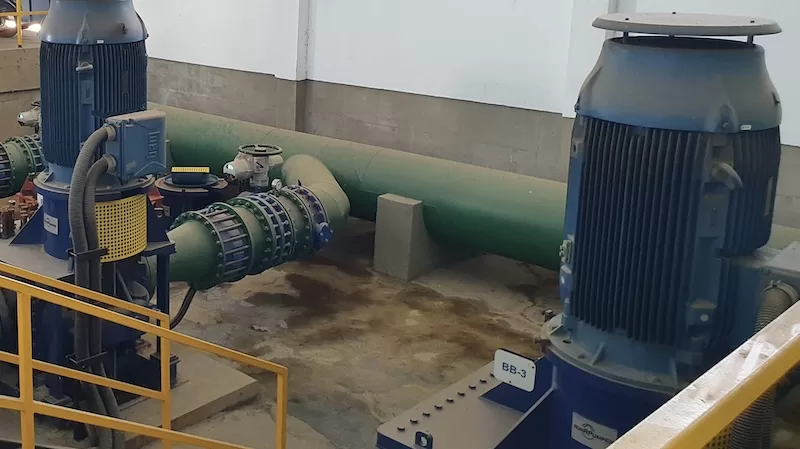Energy efficiency in industry can be defined as the search for lower consumption and energy optimization. It consists of maintaining – or even increasing – production levels and simultaneously reducing energy consumption.
The topic has become more relevant over the years, and in the industrial segment it is increasingly understood. The Power Factor, for example, which affects the cost of electricity to be paid, is described in ANEEL Resolution No. 414 of September 9, 2010:
Do more (or at least the same thing) with less, while maintaining comfort and quality. When discussing energy, energy efficiency means generating the same amount of energy with fewer natural resources or obtaining the same service (“performing work”) with less energy.
In Brazil, energy consumption by industries corresponds to almost 40% of the total energy produced in the country. Currently, the Energy Research Company (EPE) estimates that the potential for energy efficiency in industries – that is, the volume of consumption that can be reduced while maintaining or increasing productivity – is 10.9% on average – 11.1% % in thermal energy consumption and 9.8% in electricity.
Barriers to its implementation can result from several factors. Some of them include:
- Information asymmetry : When a sector has relevant information, but does not share it with other sectors.
- Divergence of objectives : When the company prioritizes other objectives to the detriment of energy efficiency.
- Commitment to energy issues : When the company does not emphasize the energy efficiency improvement program created and does not invest in measures to improve it.
To overcome the barriers, it is necessary to improve the company's internal communication between different sectors, establish clear goals, objectives and greater commitment from leadership to adopt measures that achieve energy efficiency.
Electrical energy waste in a plant occurs in different ways, the work to identify, understand how it happens and prevent it is important for reducing costs and generates three results. The first and direct one is the reduction in electricity costs, the second is the increase in the performance and durability of assets and finally, and as a consequence of the previous one, the reduction in maintenance costs.
Energy efficiency improvement planning can involve several actions, but in general, investment in modernizing equipment, reducing surplus reactive energy, combined with a monitoring system, can bring significant results in the medium or even short term.
Bridgemeter contributing to Energy Efficiency
The flexibility of Bridgemeter 's architecture is suitable for several measurements that are fundamental to energy efficiency monitoring, allowing remote asset management with alarms, notifications and predictive analysis.
To exemplify how Bridgemeter contributes to increasing energy efficiency, we present a case where the platform continues to be associated with an engine widely used in different segments.

Motor pump units monitored by Bridgemeter
By monitoring the electrical current, temperature and correlating the values obtained with the other parameters that make up the equipment, Bridgemeter compares and provides analyzes with the operational history, identifying trends that can evolve into overheating unrelated to increased demand for work, sending notifications to the customer maintenance team.
Thus, by monitoring the condition of use of the engine, it is possible to intervene to eliminate waste since part of the energy made available is being lost in the form of heat, which contributes to reducing work efficiency, causing premature wear of parts and pieces. This waste, if not monitored, generates increased costs, in addition to the risk of unexpected downtime.
Expanding the model described above, now applied to an industrial sanitation plant or a hospital with several motors, transformers and other electrical equipment that are part of the infrastructure, we see the importance of the topic of Energy Efficiency since the price trend of electrical energy in the country is high.
According to a survey carried out in 2022 by the Brazilian Association of Large Consumers and presented during the Energy Congress held by the Federation of Industries of Minas Gerais, expenditure on electrical energy can represent up to around 40% of the production cost.
“Energy waste has always been a challenge for companies. Bridgemeter technology , it is possible to detect them and minimize their impact on both the input cost and the reduction of maintenance expenses, thus promoting increased efficiency in industries and other business units”, highlights Flávio De Martin , business manager at Above-Net .
As you can see, Bridgemeter is a strategic tool that directly contributes to financial and operational issues, reducing losses, increasing energy efficiency and productivity in the industry.
1 https://www.legisweb.com.br/legislacao/?id=112868
2 https://www.epe.gov.br/pt/abcdenergia/eficiencia-energetica
3 https://www.hojeemdia.com.br/economiaefinancas/energia-eletrica-representa-40-dos-gastos-das-empresas- valor-reflete-no-bolso-do-consumidor-1.909819
Are you interested in an Industrial IoT Smart Monitoring Solution? Fill in the form below, we will contact you:



